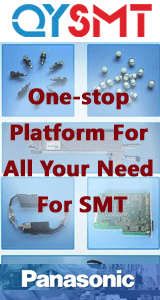| Hello, | I need some users information about "Air knif" in wave soldering: | 1. Does it decreases bridging ? | 2. Is it self installed of a purchesed kit (if purchesed, who are the recomended vendors) ? | 3. Any other information about the issue. | Thanks - R. Haviv | ECI Telecom - ISRAEL Roni- 1. Yes it decreases bridging, particularly on certain components like DIN connectors where you get a turbulent peel off or in areas that violate desing guidelines on component or via spacing. And, it opens your process window a lot so wave hieght isn't so critical. But, it is not the be-all, end-all. It can't eliminate really big bridging sites. If your components with leads prepped too long (T0-220's are a great example), you will still get bridging. 2. If your machine is from Electrovert, they can retrofit a knife on it. I believe they still hold the patent. I saw a knife retrofitted by a nitrogen company once that was pretty bad. 3. Other info - you must be careful with the knife and use common sense. On a properly designed board and propely maintained wave, it should not be needed. But in the real world of electronics assembly, it's a godsend. Just use common sense - if you run it too hot and too high a pressure, you're liable to reflow topside components. If you have too high an angle, you'll blow liquid solder up the leads of dips to create topside bridges or blow solder through unpopulated holes to land on fine pitch leads or gold fingers. If you run too low an angle, you're liable to impinge on your smooth wave, send your preheaters into a state of hysteresis, or blow lead out the load end of the machine on your operators. These aren't frequent occurrences, but I've seen them all happen in hte absence of common sense. Finally, I have one machine with a knife and one without. I would kill to get a knife installed on the second one. Hope this answers your questions. Chrys
reply »
![]()
![]() Hello,
I need some users information about "Air knif...
- Sep 27, 1998
by
Hello,
I need some users information about "Air knif...
- Sep 27, 1998
by
![]()
![]() | Hello,
| I need some users information about "Air ...
- Sep 28, 1998
by
| Hello,
| I need some users information about "Air ...
- Sep 28, 1998
by






